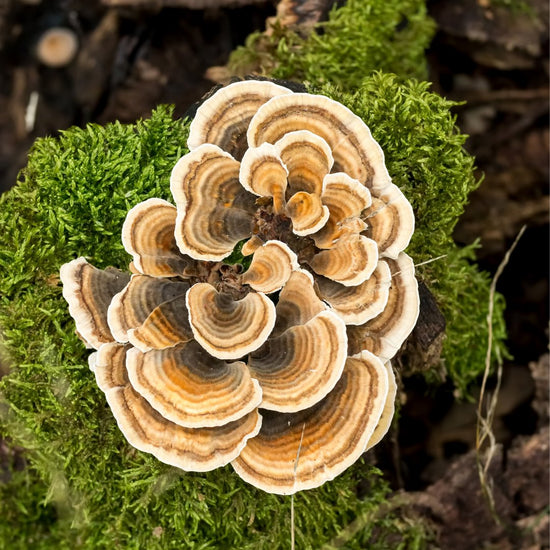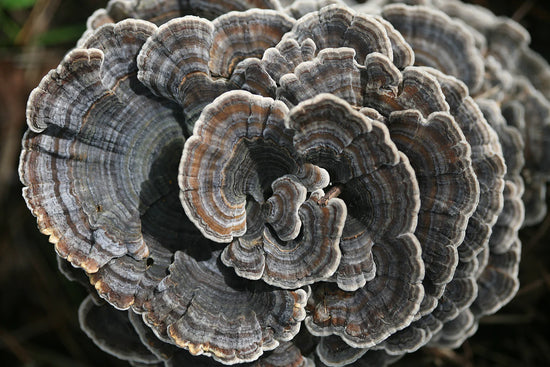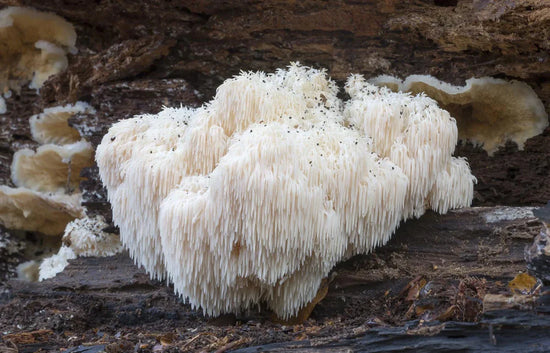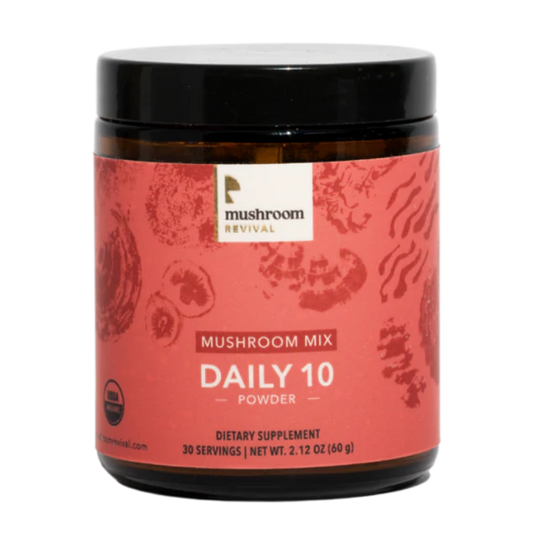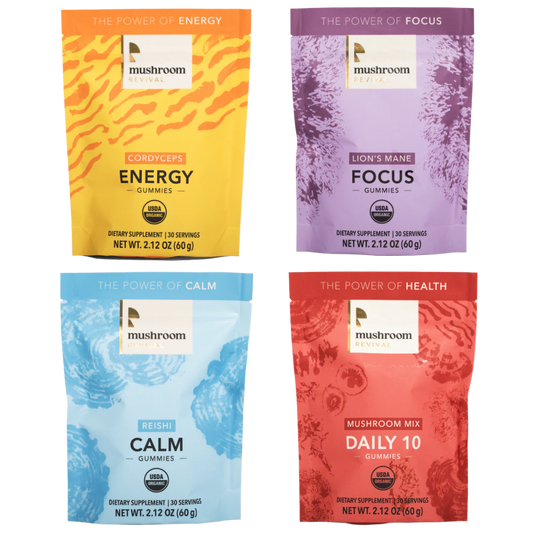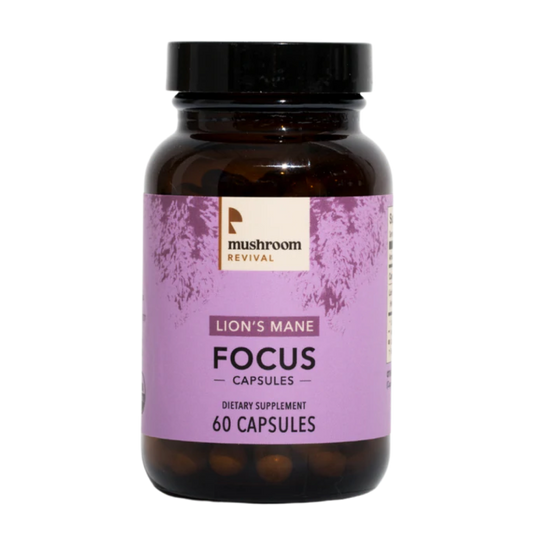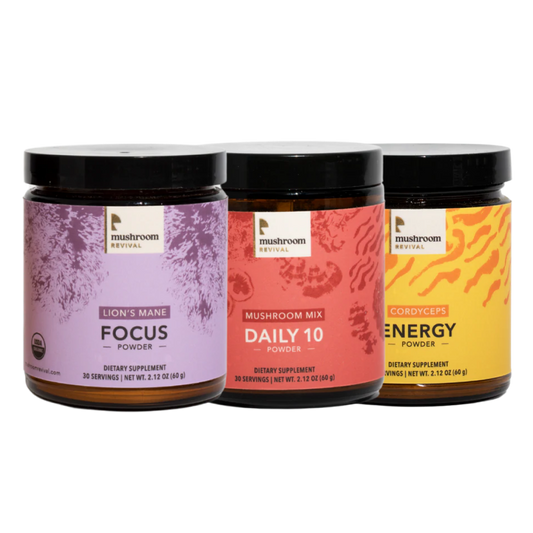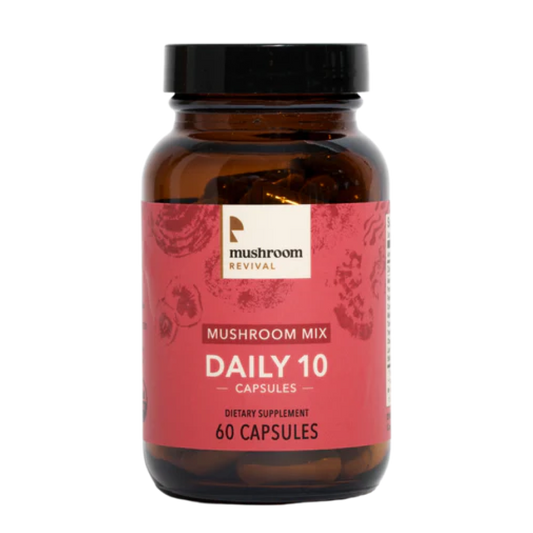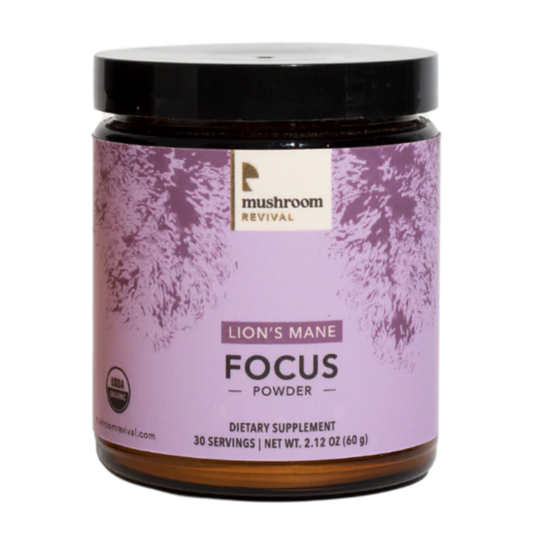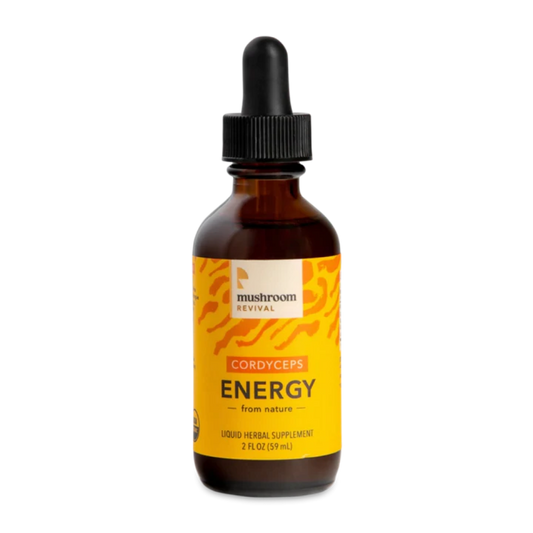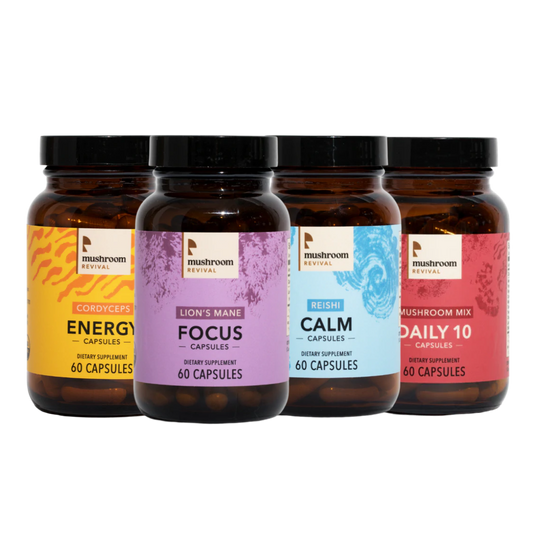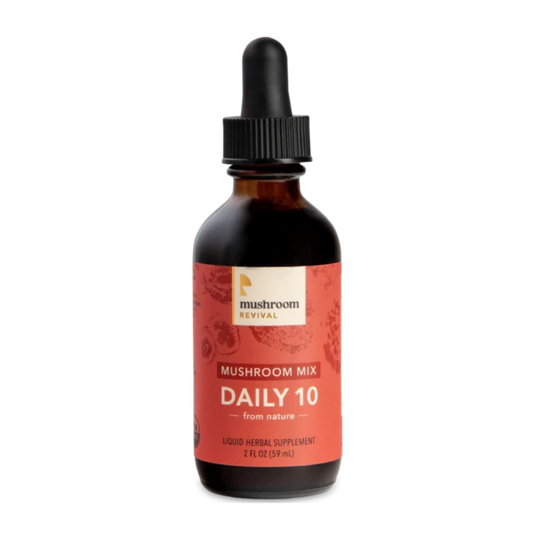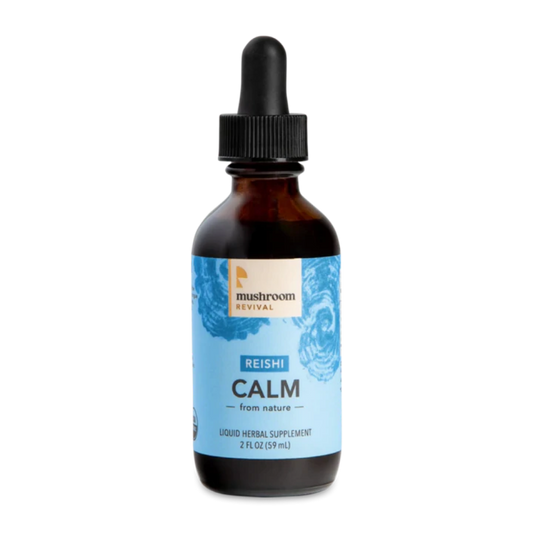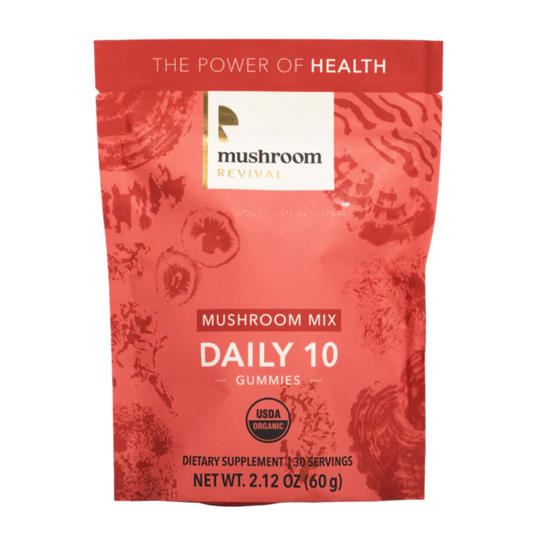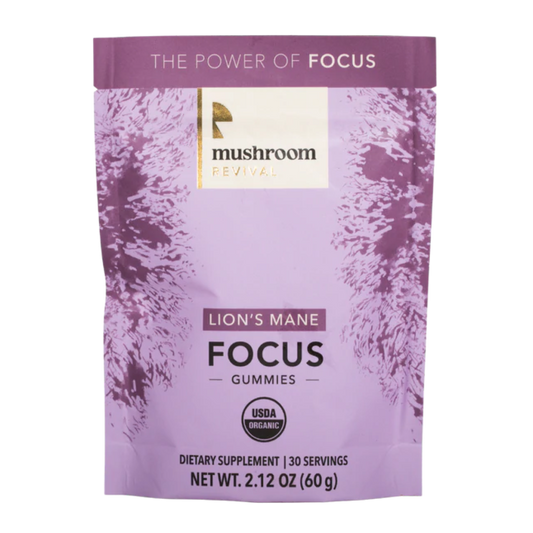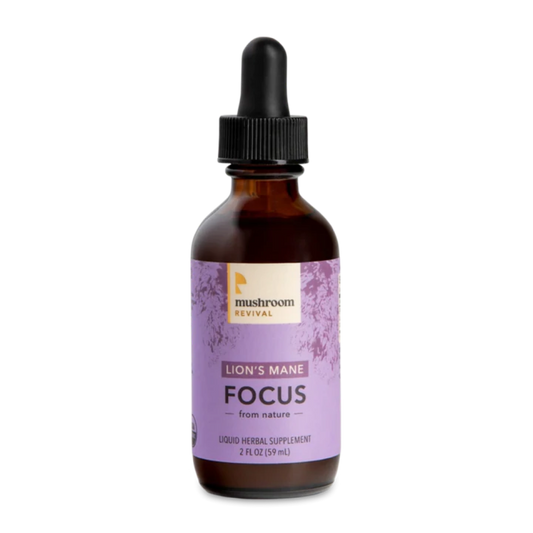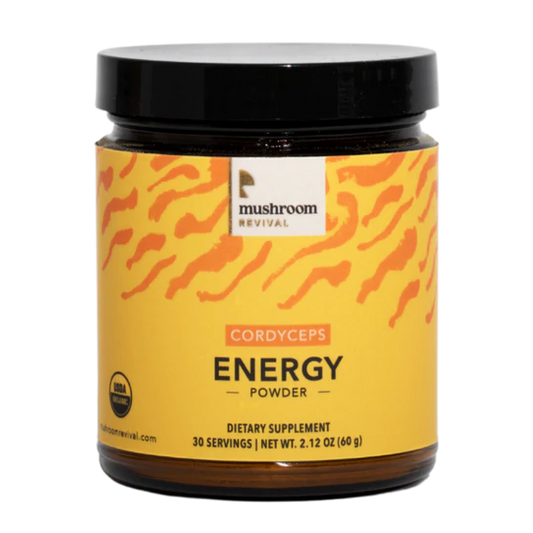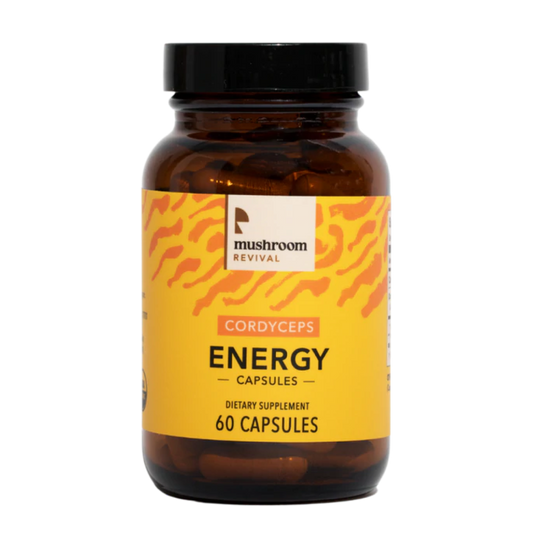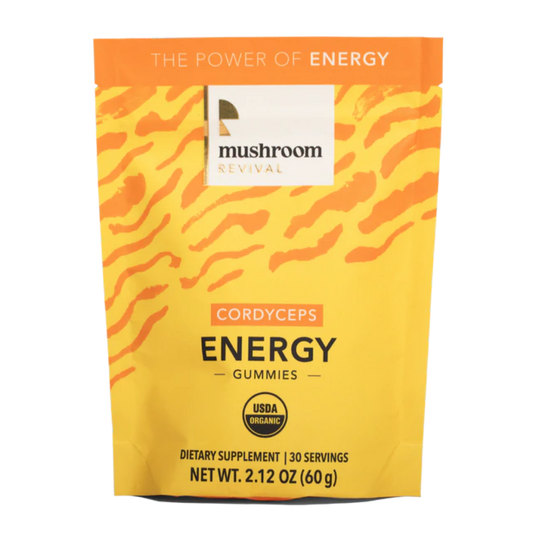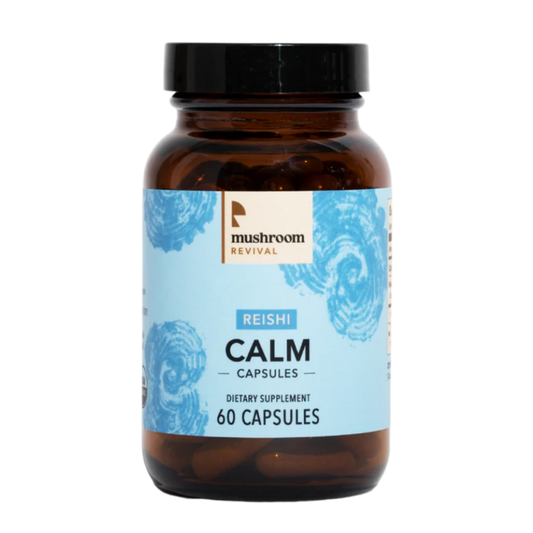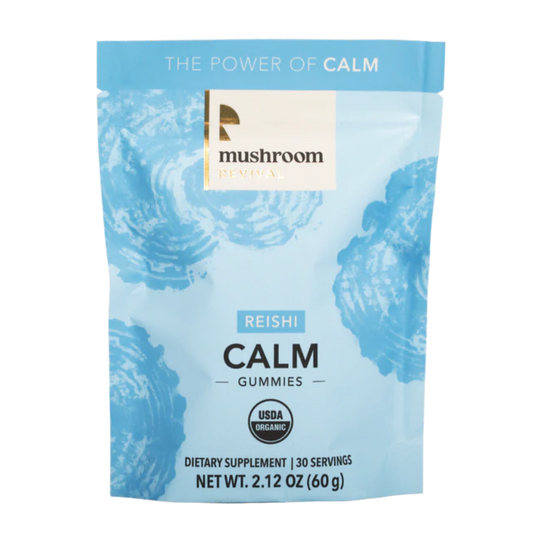Pikilo Mushroom Protein in Finland with Simo Ellilä
Alisa Nappa
">
.js?container_id=buzzsprout-player-&player=small"
type="text/javascript"
charset="utf-8">

Today we travel to Finland to take a history lesson on the foundations of fungal protein developed in 1963, having coined the name "Pikilo". Finnish researchers in the 60's were growing edible fungi on agricultural wastes and feeding livestock with it. Fast forward 60 years we chat with Simo Ellilä who started a company, Enifer, to use this same process for pets and humans too.
Sign up for our podcast giveaway here. Our next winner will be selected on February 26, 2023 and contacted via email.
TRANSCRIPT
Unknown Speaker 0:11 Welcome, welcome. You are listening to the mushroom revival podcast. This is your host, Alex Dora. And we are absolutely obsessed with the wonderful, wacky, mysterious world of mushrooms and fungi. We bring on guests from all around the world to geek out with us and go down this rabbit hole and try to figure out what the heck is going on with these mysterious fungal beings. And we ask that very question for the people that are dedicating their lives to this topic. So today, we we have a guest from Finland joining us to talk about Unknown Speaker 0:45 myco fermentation and feeding animals and humans alike. And so Hi, how you doing, man? Unknown Speaker 0:53 Alex, great to be on here on the show. Yeah, for people who don't know you who, what do you what are you up to? Unknown Speaker 1:00 Yeah, so my name is Seema Mila, and I'm the CEO and one of the co founders of aquifer. We are a biotech startup based in Finland, just outside of the capital in Espo. And basically what we do is we use a fungus, a specific species of filamentous fungus, which we grow in bioreactors to produce micro protein, which Unknown Speaker 1:24 can then be used as either nutrition for either animals or humans, basically. Unknown Speaker 1:31 And so SEMO How did you I know, you? Were you. Were you born and raised in Finland? Yes, I was. Cool. Yeah. Mushrooms are obviously pretty big in Finland. So I guess I assume you got into mushrooms and fungi, just culturally, maybe through family. But you know, what, what was your origin story? Yeah, so that's, it's true that Finn's really love you know, we're hunter gatherers. So we really love foraging in nature for berries and mushrooms. And so I think they're just about everybody that goes picking mushrooms in autumn and but in my case, it's like how I got working with fungi is really related to my, my career. So I studied biotech. Unknown Speaker 2:16 And in Finland, Unknown Speaker 2:18 there's, there's a very strong, let's say, pulp and paper industry, and every single latest that is really important in the national economy. And so I kind of studied biotech from that angle, like how could you use biotech to work with wood and wood refining industries, and so on. So that's how I kind of that's where my, my career got started as a scientist. Unknown Speaker 2:42 And you have a background in fungal enzymes and biofuels? Unknown Speaker 2:48 How did you go from that to working with ennifer? And, you know, Picollo, protein, bio fermentation of, of fungi? Unknown Speaker 2:59 Yes, exactly. Yeah. So I started as set, one of my main ideas was, how could we apply biotech to, to, to the pulp and paper industry, or like the forest industry in Finland, and back in around 2000 2005? When I was studying Unknown Speaker 3:18 the big topic around back back then was biofuels, right? So, like, in the US, you had a lot of corn ethanol popping up. And then Unknown Speaker 3:26 that was a hot topic of the day. And that's how I ended up studying that that subject as well. So we were looking basically at how could we convert byproducts from the forest industry, you know, saw dust and, and wood chips and all kinds of stuff like that into biofuels. And, and to make that happen? You one of the main main avenues of research was like using fungal enzymes, because if you think about what happens in nature to sawdust, or these wood residues, fungi will eat them, right? They, they know how to break them down. And the basic idea is that you can use that ability of fungi to convert these woody, this woody biomass into sugars. And then further on into into biofuel. So I spent around 10 years, okay, around those kind of concepts. Unknown Speaker 4:16 But then the enthusiasm around around biofuels has been waning a little bit. And at the same time, there's been a huge push for alternative protein technologies. And it was kind of I kind of got lucky and came across the history of the so called Shakila process, which you which you just referenced, so are the product, we produce the micro proteins called Pinky off. And it's, it's actually a very, it's a pretty cool story. It's actually an old technology that was developed here in Finland. And what we're doing at my company, Jennifer is actually just reviving this old production concept. Unknown Speaker 4:52 So I came across this old production concept that I thought like, Hey, this is actually super cool. Somebody already did a lot of the work for for me Unknown Speaker 5:00 and, and and for for our company. So basically, yeah, we, we started looking at this old concept and then after about a year or two we were able to attract the first investors to back our company. So that's when we were able to leave the the national labs where I was working together with some colleagues and set up our, our company on offer. Unknown Speaker 5:20 So I last night, I was doing some some research and I read kind of the history of piccolo on your, your website that you actually wrote up and it was super fascinated, I would love to go into kind of that history. I didn't know that Unknown Speaker 5:37 you know, fungal protein and and has been around for so long since 1963. I don't know when it first started worldwide, but in Finland 1963, which is pretty crazy. Because it seems like such a new concept. And it it seems to be you know, getting really popular. I know corn is, is a product is really popular. I don't know how popular it is in the US, but I know it. It's more of a European thing. Yeah, exactly. Yeah. Yeah. So maybe for you, it's not as new. But maybe for us in the States is just kind of like this new emerging thing in the last three years of like myco protein alternative proteins. It's this like, all the new craze that that's super exciting. Unknown Speaker 6:24 Or at least for me, I mean, we've we've had tempeh and we've had soy for a while, but you know, myco protein is pretty new for us, but what's kind of the history of Piccolo and and since, from my understanding, it had a boom from 1963 till 1990 And then it stops and then you guys are kind of reviving this this process. Yeah. So, to try to make the long story short. Unknown Speaker 6:53 So, the Finnish pulp and paper industry developed the regular process beginning in the 1960s. But they they reached commercial scale production around 9075. Unknown Speaker 7:04 So why they develop that process was actually making making protein was kind of a secondary function, their primary, the primary reason for developing the process was to treat the wastewater of the pulp and paper industry, they needed to find ways to, you know, they couldn't dump that stuff into lakes and rivers anymore, this stuff coming out from the bulk paper mill. So they, so they developed the they use the fungus basically to treat that water. And then the fungal biomass that was growing, they harvested it and figured out that he could use it as animal feed, essentially, that's how they developed. So it was a very different concept from for instance, corn, which you mentioned, corn was developed in the UK. And it was also quite niche. I mean, specific to the UK. I don't think a lot of people outside the UK knew much about corn until recently. Unknown Speaker 7:54 As you said, there's been a big boom around fungi or fungi and mycoprotein in the past, maybe five years or so. And that's I think our corn is also starting to take off in other countries. Unknown Speaker 8:08 Maybe I'm sorry, people that don't know we're not talking about c o r n for it. Yeah, it's different corns. spelt with a que it's a fungal protein product. For people who don't know what we're talking about. Just want to make that clear. Yeah, exactly. So, Quorn que UORN. It's another mycoprotein developed in the UK, specifically for human food applications. So anyway, where was i? i The history of Becky law, right? So basically, they stopped producing it in the early 90s In Finland, because Unknown Speaker 8:41 well, as I explained, the reason to, to make to create that process was to treat the bile, the byproducts from the pulp and paper industry. But in the early 90s, they didn't have that problem anymore. The pulp and paper plants learned how to treat their waste, burn them to utilize them in other other ways. So basically, there was no need for this process anymore. Unknown Speaker 9:03 And at the same time, you know, Finland was joining the European Union and global markets, cheap soy started flooding in and then, you know, people are like, Why produce fungal protein when we can just import all this stuff? Unknown Speaker 9:15 That's basically how I see it and but that now I think things have changed again. Now we're in a situation where we realize that we need new forms of protein, new sustainable ways of producing protein. And that's how we how we recognize that here's a here's a kind of ready concept. How do you convert something that's considered waste or a byproduct into into a product value? So that's why we started reviving the old specular production concept without effort. Unknown Speaker 9:44 And, you know, is reading that Unknown Speaker 9:48 Tim Pella company that came maybe I don't know how many years after, but they bought out the whole process they bought rights to piccolo production worldwide. Unknown Speaker 10:00 But they went bankrupt in 1990. And I was doing some more research on this company. They're crazy. They were like, making cannons and all this sorts of stuff. They they seem to be doing everything under the sun, but they had their it's just so funny that they're making this myco protein, but then they were also making military cannons. And you know, it's like, what, what? The correlation there? And then maybe that's why they went bankrupt. They're just doing not too much. So, yeah, I made maybe it's good that, you know, you're just focusing on this and making it you know, your sole focus? Because, yeah, it seems like they're spinning way too many plates. Unknown Speaker 10:41 Yeah, that could be I mean, bombala was this huge industrial conglomerate, like, I think back in the day used to have more companies like these and you still you like in Japan, right? You have these, you have your Mitsubishis that do everything. But stop by was one of those. And basically, the regular process was developed by scientists in, let's say, research lab, and then somebody needed to take that to commercial scale and that that's somebody was done pilum. And they, they then were the ones who were building those those factories, but but as you said, I think that they were involved in way too many things. And, and the pikiell process was kind of a really side niche thing for them. They, I don't think they ever really paid enough attention to it. So we I fully agree now having a team that's only fully focused on that is really what's gonna make it successful, successful. Unknown Speaker 11:35 So what, what's the origin story of an affair? How did you, you know, Unknown Speaker 11:43 hear about Piccolo, why, why were you fascinated with it? What made you take the leap to focus your time and effort on on reviving that process? Unknown Speaker 11:54 Well, Unknown Speaker 11:55 again, I'm trying to think if I tell you this long story short, let's say I was working with the biofuels industry, Unknown Speaker 12:03 actually, in Brazil, between 2013 and 2016. Unknown Speaker 12:08 While I was working there, I saw a huge amounts of these kind of byproducts streams from the from the sugarcane industry. And we had some projects were looking like, what could you do with that kind of wastewater coming from the sugarcane industry and, and there was no good solutions, really, I mean, what they do is they kind of spray it on the fields as a kind of fertilizer but but also comes with comes with problems, groundwater water contamination. So Unknown Speaker 12:35 when I returned to Finland in 2017, it was really by accident that I bumped into the history of the regular process and like, like, I studied biotech, and filament, and I'd never heard of this thing. And it was it was just astounding to like, considering the boom around fungi and alternative proteins to come across this, like lost history. Like, Unknown Speaker 12:56 here, we're finished paper engineers making this stuff like 50 years ago, what the hell Unknown Speaker 13:02 and, and then I kind of realized that what they were looking for in, in the sugarcane industry was exactly this. This process solves the problem that these guys had. Unknown Speaker 13:14 And that I realized that it's kind of the same in many other industries. There's these byproducts streams are difficult to utilize. But the bacula process could could take those byproducts, those side streams and convert them into protein. Unknown Speaker 13:27 Yeah, so then I just, I got obsessed about it, and started digging up everything. I can't, I could have bought this process. I've literally went to all kinds of archives to bring out dusty papers from the 70s 80s Finding these people who are there, there's the gentleman now in their 70s. Unknown Speaker 13:43 Luckily, they're they're nice enough to have to still talk to some someone like me and tell me everything they still remember. So Ben, it was a huge amount of work involved finding these people who had designed, built and operated these factories back back in the 70s and 80s. Unknown Speaker 14:02 But yeah, so that's, that's how I was able to pull together a lot of information on the process, Unknown Speaker 14:08 which actually puts Jennifer in a really unique position because we, here's this technology, and we have all the data on it, like how it worked, what how they, how they built these factories, how they operated them, and it's it's not that simple. Unknown Speaker 14:23 And then we yeah, we started working out the math, seeing if this could be a good business and Unknown Speaker 14:30 and after, after a couple of years, we were able to show investors that that there's a lot of potential here and get our first VC investment into our company. Unknown Speaker 14:38 Nice congrats. And obviously you have a background in bioreactor production specifically with, you know, harvesting metabolite metabolites from fungi in a bioreactor. So Unknown Speaker 14:54 you have a little bit of a leg up than then someone who did he didn't have that background. What Unknown Speaker 15:00 But how would you say your background in enzymes and biofuels comes into play with with Jennifer? Unknown Speaker 15:08 I think it's really important and why, why we are where we are today. So, as said, I had worked around fungal bioprocess concepts for quite some time. I knew all the fundamentals, I especially I was obsessed with economics, because that was always the struggle with biofuels, you couldn't make it work, right? You couldn't compete with gasoline, you could never make it cheap enough. Unknown Speaker 15:31 And I had been working around those numbers for so long. And then then here was this, this new production concept that I saw, I got to work cracking numbers, and it was really great to see that this you could actually make into really good business as well. Not just you know, having a sustainable new product, but but you can actually make it profitable as well. Unknown Speaker 15:53 And how, how was your education experience? You know? Unknown Speaker 15:59 Obviously, it differs country to country. I know Finland is huge into into mushrooms and fungi. And was it easy in school to study mycology and fungal enzymes? Did you feel like Unknown Speaker 16:15 you know, there's plenty of professors and classes and resources available for you? Or did you have to kind of pave your own way and really say, No, I want to study this, let's let's kind of Unknown Speaker 16:30 let's figure out a way that I that I can can learn about this stuff? Unknown Speaker 16:34 No, I wouldn't say that it's it's something particularly Unknown Speaker 16:39 common here. I mean, I studied biotech, but originally more from a kind of medical biotech angle. Unknown Speaker 16:46 And then I said, I thought that maybe in Finland, we could have a special niche, applying these technologies to, to the forest industry. And, and that's where I ended up working at VTT, which is the, let's say, national labs of Finland. And there you have this, I would say a real concentration of knowledge on fungal biotech. So these guys have been working with all these concepts around fungi from from the 70s. And really leading leading researchers in the field, especially on how do you use fungi to produce enzymes produce other types of proteins. So we have actually another startup that recently came out of there making using fungal biotech fungal organisms to produce egg, egg white protein. So there's a lot of a lot of know how there. Unknown Speaker 17:38 But it all basically comes originally from the pulp and paper industry and how to use fungi and biotech to in that sector. So you have a really cool, step by step process on your website on you know, how do you make Piccolo? Unknown Speaker 17:56 So for people who have no idea about bio reactors and fungal ferments, and you know, making Unknown Speaker 18:05 fungal proteins, how can you can you break it down from step one to the finished product? You know, how is this made? Right? So, Unknown Speaker 18:16 I guess, the first thing to understand it, it's a submerged fermentation. So, we have a tank where we have a liquid and that liquid in our case would be the byproduct of some other industry, it could be from, you know, from corn refining industry in the US or from the wood industry in Finland. So, it's a it's a liquid that contains a little bit of this and that are byproducts. Unknown Speaker 18:39 And then we inoculate the fungus in there, so it starts to grow in that liquid in the in the bioreactor. Unknown Speaker 18:46 The fungus consumes organic material that's in the liquid, it starts to form this kind of viscous mass within the reactor. And the special thing about our process is that it's it's continuous. So once we have enough fungal biomass in that reactor, Unknown Speaker 19:01 we move so called continuous culture. So we're all the time adding liquid into the tank, and we're all the time harvesting so it's all continuous and then Unknown Speaker 19:11 then we have a liquid just coming out of the bioreactor containing the fungus it looks something a little bit like a porridge. Unknown Speaker 19:20 So you have those fungal filaments floating around in the liquid making it really like a viscous slurry and Unknown Speaker 19:27 and then we harvest the fungus by filtration. Unknown Speaker 19:30 So you can literally run that stuff into pasta strainer and the fungal fibers will just stay there. Unknown Speaker 19:39 And then you can wash wash the fungal biomass, squeeze out all the excess water and then basically, after that, you have the kind of wet fungal cake resembles a little bit of something like tofu. Unknown Speaker 19:51 And then that, that what biomass Do you draw in our case? We dry it, we dry it and then make a final kind of powder. Unknown Speaker 20:00 That's your myco protein. It's um, it's very high in protein, good quality fiber in there as well. And you can really use that, that dry myco protein powder, just as you would any conventional like soy powder or, or pea powder or whatever. Unknown Speaker 20:17 So I think Unknown Speaker 20:21 temp Allah, or Tim Pella, however you pronounce it they were using piccolo for I think it was just pig feed, if I'm if I'm correct. I don't know if they're using it for anything else. But I know you're focusing on using it for humans, and then also cat and dog food and then fish feet. So I'm just curious about those kind of three categories and how you came up with them? And how the process differs between them. Right, if at all? Yeah, Unknown Speaker 20:54 that's correct. So when they used to produce the stuff, and then went back in the day, it was sold in pig and chicken feed. Unknown Speaker 21:02 And when we started running the numbers, we quickly realized that that's, yeah, you can, you can just about make ends meet by making bacon chicken feet. But you know, you're you're literally just covering your costs, your employee costs, your steam, electricity, whatever, but you're not really making much profit there. And if you want somebody to invest in our company, that's not going to work. So So we then we started looking at what could be, you know, higher, a bit higher value market where we could take this product and, and could we make this product work. And, and that's how we came across aquaculture and pet food. So we realized that in those segments. Unknown Speaker 21:43 First of all, we can sell into those segments from a regulatory perspective, because the product has been sold to animals for such a long time that there's a lot of evidence of its safety. And the European regulators agreed that, you know, there's so much proof here that, that it's, it's safe for animal nutrition. Unknown Speaker 22:02 So we can we can access those markets. And but at the same time, the price points are significantly higher than in, in your bigger chicken feed. So. So that's basically how we how we got going, we had no idea if the protein would work in those applications. So it's been an interesting couple of years of discovery, doing we've been doing a lot of salmon trials from trials, Unknown Speaker 22:25 purely Purina has tested it with cats and dogs in the in us. Unknown Speaker 22:30 And yeah, basically everything we've tried it so far, it works. So that's, Unknown Speaker 22:35 that's been great. Unknown Speaker 22:37 But then we we early, quite early on, like after a year of having our company up and running, we decided that we're also going to start looking at if we could use this directly in human nutrition. And Unknown Speaker 22:50 that requires a so making the, the protein for aquaculture or pet food is relatively similar to what they used to do in back back in the day, the changes are minimal. Basically, we're just beefing up the protein content a little bit to make it more attractive to your salmon or whatever. But But taking this protein to human nutrition, that's another story. So Unknown Speaker 23:12 there's a couple things we need to change. One is, I wouldn't be making food with a pulp and paper industry waste, to be honest, like, even if it was technically possible, which I think it is. I'm not sure your consumers would want to hear that or not necessarily at least and maybe your regulators, either. So. So what if we make a human food grade mycoprotein, then we would be looking to use a byproduct from let's say, the food industry. And actually one of the owners of our companies is the dairy dairy major here in Finland, Somalia. And one example is we could use the excess lactose they have they have tons of lactose, which today kind of really goes to waste and we could grow the fungus on that or something else that's really food grade. Unknown Speaker 23:57 And the other side of things we do, then you pay a lot more attention to the final steps of the process, ensuring the hygiene levels and we do we do a couple of thermal treatments to really make sure that it's it's really suited to human consumption. Unknown Speaker 24:13 That's great. Yeah, people tend to care a bit more about their their pets than they tend to do livestock but yeah, yeah, don't get me wrong. I mean, duh. Of course we make sure that the feed grade quality quality product is safer for the animals as well. But yeah, there are regulatory and consumer. Unknown Speaker 24:34 Yeah, like differences in how any consumer perception. Yeah, yeah. Unknown Speaker 24:41 I had a question. It just slipped my mind. Unknown Speaker 24:44 Yeah, I forgot to take my Lion's Mane today. That's that's that's what happens. Unknown Speaker 24:51 What's he gonna say? Unknown Speaker 24:56 Tote. Yeah, totally, totally drawn a blank. Unknown Speaker 25:00 But but I'll ask you this what what would you say is the hardest part of your work? Like, do you have a moment during the process ever, that you, you know, wanted to give up, maybe things just totally got contaminated or, you know, struggling to get to get Unknown Speaker 25:17 money or, you know, whatever it is, Unknown Speaker 25:21 I guess every entrepreneur struggles, right? It's, it's never easy, especially the early days, when you're when you're literally, we were a team of five, five people setting up the company originally, and we were literally doing everything ourselves from building the lab to doing the experiments and, and at being our own coffee, coffee makers and cleaners in the office and doing funding negotiations and business negotiations at the same time going from an overall to a suit, you know. Unknown Speaker 25:49 So that was, it was exciting. It was it was really stressful at the same time. Unknown Speaker 25:56 But yeah, I don't know. Unknown Speaker 25:59 It's been an exhilarating journey. I think the most difficult part is definitely like, because in our case, we need to build factories. So fundraising will be your biggest hurdle like how, how do we? How do we get to the point where we're able to raise 10s of millions of euro to build a factory to make this macro thing, but luckily, we're getting there. We're, hopefully within a couple of next months, we're able to announce the final investment decision in our first full scale factory so fingers crossed. Yeah, good luck, man. That's, that's super exciting. I figured I remember what question I was, I was Unknown Speaker 26:35 about to ask but um, but to the flip the flip side of of that question. Unknown Speaker 26:43 What what is the most you know, you're saying it's, it's exhilarating at the same time and being an entrepreneur is definitely a roller coaster of emotions every single day, but, but what is the most rewarding aspect of this process and the most exhilarating for you, Unknown Speaker 26:58 I guess it just has to be like the all the all the small successes, all the especially the feedback from our partners, you know, when they get to test the product, and as I said, we didn't, ourselves we had no clue if it would work and all this stuff, we're testing it and, and getting all that positive feedback, and it really working much better than expected like, like the for instance in the salmon and shrimp trials that not only do they eat it, but they actually grow better, they're healthier. Unknown Speaker 27:28 Same in the food applications. That's been like the that's been so cool the past year, we had no idea how it would work in different food applications. And now we've been doing all kinds of stuff from from pasta to breakfast cereal to your your, your vegetarian meatballs, and it seems to just fit everything single thing and it works really nicely. And not just you know that you're able to put it in there, but it actually makes the products better. So it's super cool. Unknown Speaker 27:55 Yeah, so so that's my question is, Unknown Speaker 27:58 you know, you're talking about working with is it Neutrogena is that their name? The Unknown Speaker 28:04 the company is called Purina Oh, period and not nutria. Yeah. So you were working with Purina and then you know, you're talking about breakfast cereals and meatballs and things like that. I'm just curious, like, do you envision Unknown Speaker 28:21 and, uh, for actually making these products, you know, like actually making the final, you know, fish food or meat balls or things like that? Or do you envision yourself, just making the bulk ingredient and then selling it to a company like Purina or a meatball manufacturer and just saying, hey, like, this is our nutritional facts, this is what you can do, we've already tested with with, say, meatballs, or, you know, cat food or whatever, and it works. And we'll send you a sample XYZ and just just kind of focus on manufacturing and things like that. For now, our vision is to be clearly a b2b company. So we just make the ingredient that's, you know, that's what we know how to do best. I'm not gonna, I'm not gonna claim that I'm better than theory that making their their you know, cat food or dog food or better than, you know, food company making those footprints but that's not our in our DNA. We're the founder team. We're all about bioprocess engineering and fungal biology. That's that's what we know. So I think it's better we stick to that and not do a dumbbell and start making military candidates. Exactly. That's right. Unknown Speaker 29:30 Yeah, we make meatballs and military candidates are just sticking, sticking to what we know. You know, amazing business plan. I'd like to pitch pitch that to some VC. Unknown Speaker 29:41 Yeah, best best of both worlds. Yeah. Yeah. That's funny. If you can, you know, I know NFL is pretty new. But if you could redo it all from scratch, knowing what you know, today. Unknown Speaker 29:55 Would you do anything different? Unknown Speaker 29:58 Right, so what would it be? Unknown Speaker 30:02 I think like one of our bottlenecks is all the time producing enough samples for a lot of our partners. So I think I would have gone earlier on, maybe raised a bit more money and, and made like a little bit bigger pilot since the beginning because like there's so many people wanted to test and, and and we need to test the product more. So that's something I maybe would have done a bit different and sure that we have copious amounts of samples available all the time. Unknown Speaker 30:32 Yeah, I'd be this is the kind of the conversation I've had with a lot of myco material companies is that they're they're trying to find, Unknown Speaker 30:42 it seems like, the applications are so abundant and infinite, that they're trying to find what is the best use case, because they're like, you know, we can't make infinite Unknown Speaker 30:57 kilos of this stuff. Like we can only manufacture so much. And so and it's very expensive and time consuming. So what is kind of the best bang for our buck? Unknown Speaker 31:08 And, you know, I was talking to one company, and they're like, Yeah, we we wanted to make like furniture and all these like, really big, bulky items. And they're like, yeah, they don't, you know, it's so much material for kind of a low price tag. And then they're like, Yeah, then someone reached out wanting to Unknown Speaker 31:29 use our myco materials for like makeup removal, you know, like those foam things? And they're like, yes, they're really tiny. Unknown Speaker 31:38 And they don't really have to be perfect, because they're just like, these foam triangles. And, and they're like, Yeah, we just like access cut offs. And, and people pay a lot for them in the makeup community. And they're like, we never even thought about doing that. And, you know, they're like, Okay, yeah, that that seems to be our one, like one of our focuses. Now, I don't know if they're still doing it today. But you know, it's just interesting to find those little niche things that you can to get there. You have to experiment and give lots of samples and talk to so many different companies and kind of figure out Unknown Speaker 32:15 what the best use case for for this is? And, yeah, in our case, I think what was guiding us was that, you know, here we have the examples of the old bacula factories in Finland. So we started a company, we were, like, really progressively going for, like, let's just build one of one just like those ones, you know, but it costs 10s of billions. And for a startup, it's not that, you know, simple, especially once the once the VC market kind of went, went south a Unknown Speaker 32:46 year and a half ago. So. So back when we got started 2020 There was a lot of money. Unknown Speaker 32:53 You could write you just yeah, you could do just about anything, but now you have to be really careful with your with your planning, like you really have to be smart about where you put those limited, millions that you're able to attract these days. No, it's It's so funny. About a year and a half ago, we're like, yeah, we're ready to raise. Yeah, like the worst time ever. And so yeah, it's interesting to Yeah, to have a startup and Unknown Speaker 33:18 to Yeah, yeah, it's interesting to balance that. Unknown Speaker 33:24 That passion and that visionary state of wanting to do a million things, and then, you know, I gotta, I gotta calm down, just do the most important things and, Unknown Speaker 33:34 and really focus on on the things that move the needle. But, you know, I miss this question, I asked everyone, because I'm super interested, if you did have unlimited money, and time and team and resources, and you did have all the factories of your wildest imagination. What would you do? Unknown Speaker 33:53 Wow, that's a tough one. Unknown Speaker 33:56 No, I mean, Unknown Speaker 33:58 we're just so obsessed on on scaling this as fast as possible. And, you know, my answer would be just don't build the building as many of these factors as possible, because really, we really want to move the needle globally. And we really believe that micro protein has the potential to become as, as you know, abundant as as ubiquitous, as you know, as soy is today or animal based proteins are today we so that's how we think about it, right? So today, we get our protein from plants or animals and we really believe that fungi will become a third huge category. And we believe that our process has the potential to really make that happen. And but to make that happen, we just need to build a lot of manufacturing capacity, and that's what we Yeah, that's what I would do. Unknown Speaker 34:46 Do you Unknown Speaker 34:50 what do you feel like are your biggest hurdles besides, you know, from from a b2b perspective, like in your in your Unknown Speaker 35:00 Are conversations with these these companies? And they might be just initial conversations. Yeah. Have you noticed some? Unknown Speaker 35:09 Some hesitation from these companies of like, why? Like, is it? Is it just like myco phobia of them not understanding fungus? Are they scared of Unknown Speaker 35:20 incorporating a fungus in their food? Like, what? What is it? Like? What do you feel like are your biggest roadblocks or Unknown Speaker 35:30 hesitations of like making these connections? Well, Unknown Speaker 35:35 well, I said, we work in a couple of different Unknown Speaker 35:39 business areas from potential markets. And I would say in aquaculture, there's, there's no pushback at all, I would say, Unknown Speaker 35:47 people are really excited about the concept of using micro protein or fungal protein in in your salmon feed, or shrimp feed or whatever. Let's call in. Yeah. Unknown Speaker 35:57 In pet food, I think the jury's still a bit out, I don't think there's been that much market research, to be honest. And we, we, Unknown Speaker 36:07 we'd really like to do some first test marketing campaigns. And I think people would be excited about, it's all about how you tell the story, like where this is coming from, why it's why it's sustainable, why it's good. Unknown Speaker 36:18 And then the human nutrition? Well, you know, as you said, corn has been there for a while. Unknown Speaker 36:26 And, and fungi have been used in in different ways. Okay, it's more as a processing method. And it's making soy sauce or making them pay or whatever, but, but it's there, or even making your blue cheese. Right. It's, it's. Unknown Speaker 36:40 So I think it's all about how you how you tell the story to the consumer. Unknown Speaker 36:45 But I would, I would say that so far, the response has been overwhelmingly positive. It's just mainly about getting, getting to those first commercial contracts. And, and, and one of the difficulties there is that in these fields, even in agriculture, and pet food, they're, they're really price conscious. And, you know, everybody has a big need to make their production greener. But at the same time, they're not making huge margins in their business, so they can't really afford to pay all that much. So So and for a startup like ours, we really need to make those first that's, we should be able to attract a bit higher price for our first factory are so long to get to get really get going and to, to be able to finance future production and bring down the prices. Unknown Speaker 37:33 So it's, it's really I don't know, like, it's, it's really a chicken and egg problem, like, who moves first we would need our customers to sign up, like, sign off on, like, Okay, if you guys build a factory, we're gonna buy everything you can produce, that's what we would need. Unknown Speaker 37:49 But at the same time, they're not able to do that at a price at an interesting price point. So that's, that's tough one. Unknown Speaker 37:57 And Unknown Speaker 37:58 Piccolo, just google ad. It's pasted on Macy's. I can't remember the exact species name. Unknown Speaker 38:06 Per Se llama use leorio T. Yeah. Is it? Do you only work with that? That species? Yeah, exactly. So we are using the exact same strain that they did back in the 70s. Unknown Speaker 38:19 Clap. And why we do that is? Well, for a couple of reasons. One is that, of course, they they grew this for such a long time. And there's all that Unknown Speaker 38:30 proof basically, that it's safe, because of that. And they did actually huge screening program before they developed this process. They they selected the Ceylon ICS from among, like 300 different fungi. So there was a lot of work that went into selecting this one. Unknown Speaker 38:48 And at the same time, they said our process is continuous. So the strain has actually evolved to be more fit for this process, so to speak. So there's no, no real reason for us to change. Unknown Speaker 39:00 And do you know much about that selection process of why they they pick that that species of basidiomycetes is was it? You know, I'm guessing fastgrowing? No. mycotoxin so it's, it's safe for consumption? pretty resilient with that any other kind of reasons that that kind of stood out why that was the the chosen one. Unknown Speaker 39:27 The Chosen One? Yeah. So they, yeah, exactly. It was it was a combination of all those factors that you mentioned. So they, they screened 300 organisms. They first screened for the ones that grew the best in the sense of they, they were they were tolerant, no matter what you gave them that they would grow. It grew a good temperature at rough pH, it could handle the demands have an industrial process, so to speak. Unknown Speaker 39:52 And then once they were happy with that, they still had like 12 different species and then they went to the animal trials. And and as a Unknown Speaker 40:00 combination of which strains performed the best in the process and which was safe and most nutritious they they selected Becky Lubbock, they had the best combination of features. Unknown Speaker 40:13 And how, how big is your team right now? Unknown Speaker 40:17 today? We're a team of 20 people. Unknown Speaker 40:20 Plus, and has that been growing over the years? Where you found it in 2020? Sorry, if so, yeah, that's right. So we were we were five people back then. And a year ago, we were still nine people. So we've pretty much doubled over the past year. Unknown Speaker 40:38 And yeah, we'll, we'll keep growing as we as we start scaling our production. So I said, now we're Unknown Speaker 40:44 really planning our first industrial scale factory. And of course, if you build a factory, you'll need a lot more people. Unknown Speaker 40:51 Yeah, and so for people that are listening to this podcast, and we have listeners from all around the world, it I get this question a lot of people who are interested in mycology or fungi, trying to go to school for it, and, you know, depending on the country, it's really hard. But I think just worldwide, it's it's hard to get a formalized education in mycology beyond, you know, Unknown Speaker 41:19 like, plant pathogen. You know, it seems to be that that is pretty much the focus in a lot of universities is just plant pathogens or mycorrhizal fungi. Unknown Speaker 41:31 So, when you when you're hiring, you know, these these 20 people, or 19, or however many people Unknown Speaker 41:40 are you looking for a background in in biotech? Do they have a background in mycology? You know, for people listening, that maybe want to get into this line of work? Like, what? What should they pursue that that you're you're looking for, for for your team? Unknown Speaker 41:56 awkward questions. So we're quite diverse team. So we have everything from food scientists to different types of business professionals and engineers. But Unknown Speaker 42:06 yeah, the majority of us are have a background in biotech. And we can't really assume that people have much background in fungi in you know, specifically. So generally, we hire people who have had a formal education in biotech, and then the fungal part we teach them. Yeah, was that the same with when you were working with enzymes that you just have a background in biotech? And then the fungal part? EJ comes late, actually, so So yeah, I at university, I knew nothing about fungi. It was all through my first first job basically, that I started getting into. Unknown Speaker 42:47 So So you, did you already have an understanding of working with bio reactors and, and just, you know, you just have to have a basic understanding of fungi to do the work. But yeah, pretty much. Exactly. So if you if you have a formal training in bioprocess, engineering or biotech, I think you can get the hang of fungi relatively quickly. Okay. Yeah. Cool. Right. And filamentous fungi in the sense that you do, right, it has nothing to do with your your forged mushrooms or anything. Right, right. Right. Right. Right. Yeah. Yeah, yeast, and these types of fungi are much different than the typical cap and stem Basidiomycota. But, yeah, have you thought about using other types of fungi? Or, you know, since since it's already been used for decades, and it's approved by Finland's, you know, your, it's like, why don't fix what isn't broken? Yeah, that's pretty much our thinking. And it's really core to what we do. And, and, Unknown Speaker 43:50 and basically, it's also part of our IP. So that particular strain was transferred to us, we actually paid for it that it's kind of article, rip it, so to speak, which we guard very carefully not to not to get I have other people get their hands on it. Unknown Speaker 44:07 Yeah, so I don't see us changing very quickly. And then the other thing is the food regulation, right, so we're gonna file for approval for this thing to be used in, in food. And, and then you're basically then you can't change the strain, right, you've applied or the permission for that strain, and then you have to stick to it. Right. And did they sell piccolo outside of Finland when when they're in their hiatus? Like how has it been approved outside of Finland and other European countries? Unknown Speaker 44:39 Back in the day it was approved for feed use also in Sweden and Czech Republic but I think that's about it. So they were they had a lot of plans to build more factories. They were they were trying to sell the process to Yeah, to Sweden to Portugal to the Soviet Union, all kinds of places but but not Unknown Speaker 45:00 novels factories ever materialized. So there were only two factories that were in Finland and the product was sold here. And is that your core focus is just keeping it in Finland? And, like, would you ever be interested in and getting it approved? In, you know, the whole EU or, or other places? Yeah, so nowadays, all the regulations EU wide, so it's already approved for an animal nutrition in the European Union, and we will apply for it to be approved for food also, in the EU. And we actually do also plan to apply simultaneously in other jurisdictions, including the US, because, to be honest, if you're gonna fly for fluid approval in the EU, it's like the hardest place in the world to get that. And so you might as well apply in the US as well. Unknown Speaker 45:46 And in shipping is just a powder. So it's pretty, it's pretty lightweight. So it and it, is it is it completely shelf stable? Do you have to refrigerate it or what is shelf stable is just like your, your wheat flour or whatever, are cool. So it'll have a shelf life of about a year. Unknown Speaker 46:08 So it's really stable. And of course, our bigger vision is that we want to have production elsewhere as well. So now we're building our first factory here, but But definitely, this is it's a small market, at the corner of Europe, like the big opportunities to be had elsewhere. So yes, Central Europe, US definitely big in our longer term plans. Unknown Speaker 46:30 Well, I have a I have a connection for you. Post post podcast. I'll introduce you. Yeah, yeah. Unknown Speaker 46:39 Yeah, you're coming to we're coming to future food tech in March, if anybody's around. Oh, sweet. Where's that? That's in San Francisco. Sweet. Cool, right. Oh, I will not be in San Francisco. But I wish you the best of luck. I probably have some friends going. And that should be a fun time. I'm, I can't wait to go to Finland. I've never been but I hear amazing things. And it looks just Unknown Speaker 47:05 unbelievably stunning and great mushrooms. So So yeah, if whenever you're over, we can go and pick some chanterelles. Love it. Yeah, Chantel. So what? What do you see yourself doing in the next, you know, five years, if all goes to plan? Unknown Speaker 47:24 Well, it says really obsessed now with with making this success and a reality. So hopefully, by five years, we will not just have one factory, but we will actually have several. So Unknown Speaker 47:36 really focused on building our own factory right now. But there's, there's a lot of things that we can't publish yet. We're working on several other opportunities. There's a lot of people who are interested in producing bacula in different countries using different raw materials. And yeah, hopefully some of those cases will fly as well. And we would see, like, factories and other countries by by that time. Be super cool. Yeah. Be really awesome. And where can people follow you your work? And and follow the timeline of how Jennifer and Piccolo is going? Yes, I, I think we're the most active on LinkedIn. Of course, you can check out our website, which is www dot att effort.com. So there's e n, I S, E, R, and R for.com. You can also find us on LinkedIn with with Jennifer. Unknown Speaker 48:30 Yeah, those would be the main places I'd go for information on our company. Unknown Speaker 48:34 Sweet. Yeah, I can't get the image of the fungal porridge tofu. Unknown Speaker 48:41 The way you're describing it, and I read it on your website, too. And I was like, that is so wild. That was not what I was expecting at all. But yeah, that's I hopefully one day I could I could see the process or, you know, a picture of something that that that that sounds like a really wild image to look at. Does not does that sound very fungal, but also at the same time, very fungal at the same time. But But thank you, man for coming on. And I appreciate, you know, talking about this. It's always interesting to see, you know, these these different emerging industries. And the history is in different countries, you know, depending on if they are myco phobic, or myco philic. And Finland just seems to be a little ahead of the curve in in mycoprotein. So it's really exciting to to learn about that history from 1963. And so I'm happy that you're reviving the tech and getting it out there for humans, cats, dogs and fish like so. Yeah. More more fun fungal protein for everybody. So yeah, thanks for coming on. Thanks a lot for the invite Alex. It was a pleasure. Yeah, and thank you everyone for tuning in and tuning in for another episode of the mush revival podcast, wherever you're tuning in from. We have people all around the world and can do Unknown Speaker 50:00 Without use, I really appreciate it. We if you liked the show and you want to support, we don't have a Patreon or any way that you could donate directly. But we do have a brand mushroom revival where we have a whole line of organic functional mushroom products from capsules, powders, gummies tinctures. And if you want to get some, we have a special VIP coupon code just for listeners of the show, and that that coupon code is pod treat for a surprise discount. And if you don't want to spend any money, we have a giveaway going on, we pick a winner once a month. And that link is in the description, you can enter to win some mushroom goodies. Unknown Speaker 50:44 We have a bunch of free educational content on our website as well bunch of blog posts, we have free ebooks that you can download, from recipes to fungal taxonomy to you know Unknown Speaker 50:57 microdosing to ecology all you can you can dive into and then and then my newest book, The Little Book of mushrooms is also on our site as well and in a bunch of bookstores around the US, Barnes and Noble and, you know, etc, etc. So check that out. And as always, you know, keeps keep spreading the spores and your love and fascination and passion with mushrooms and fungi. Just tell everyone you know to get everyone more interested in in this this, this revival and evolution of our sacred relationship with nature. So with that much love and may the spores be with you Transcribed by https://otter.ai







